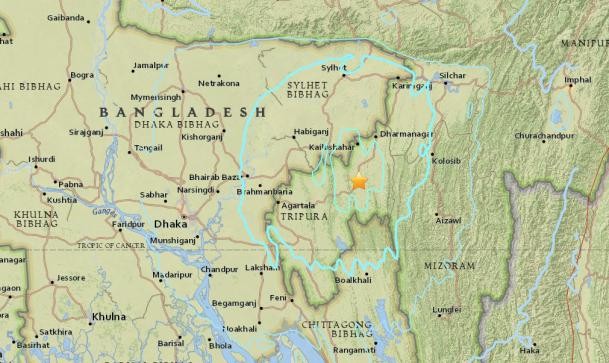Focus: GS-II International Relations, GS-I Geography
Introduction
- Tripura opens its first-ever inland waterway with Bangladesh from Sonamura (about 60 km from Agartala) in the Indian side, and Daudkandi of Chittagong in Bangladesh.
- This project was included in the list of Indo-Bangladesh Protocol (IBP) routes agreed up in 2020.
- The ambitious project has already been projected by Tripura’s incumbent BJP-IPFT government as a major catalyst to catapult Tripura into a gateway to the North-East.
Tripura’s foreign trade
- Tripura’s cross-border trade commenced in 1995 and currently, the state exports a handful of goods and materials worth Rs 30 crore to Bangladesh annually, but imports good worth Rs 645 crore.
- This huge trade deficit is due to abnormally high import duty apparatus in Bangladesh and the absence of many commodities abundant in the state in the list of goods allowed for export as well as port restrictions.
- Consecutive state governments have nudged Dhaka to smoothen processes for flow of goods.
- Now, the forthcoming Agartala-Akhaura rail project, Indo-Bangla bridge over River Feni and a second Integrated Check Post (ICP) at Sabroom are also aimed at taking up the quantum of trade between the two sides.
Tripura’s first Inland waterway: River Gomati
- River Gomati connects with Meghna in Bangladesh via a 90-km stretch of water from Sonamura till Daudkandi.
- The plan for launching inland waterways connectivity on River Gomati included dredging the riverbed to make way for small ship and boats from Sonamura till Ashuganj river port in Bangladesh.
- Dredging was deemed necessary given the shallow depth of riverbed and constant sedimentation in the areas where the river meanders below hills.

Making Gomati navigable
- River Gomati is the largest and longest river of Tripura and is also considered a sacred river and devotees converge along its banks at Tirthmukh every Makar Sankranti.
- Gomati is also a regulated river. Due to the high altitude of in its upper catchment and Dumbur dam built in 1974 as part of the Gumti hydro-electric power project, the river erodes a lot of sand and rocky particles in its upper segment.
- Gomati riverbed remains navigable for less than four months a year, that too only during monsoon days.
- For rest of the year, scanty rainfall in the hills results in low volume while accumulating sediments raise the average riverbed, rendering Gomati even shallower.
-Source: Indian Express




